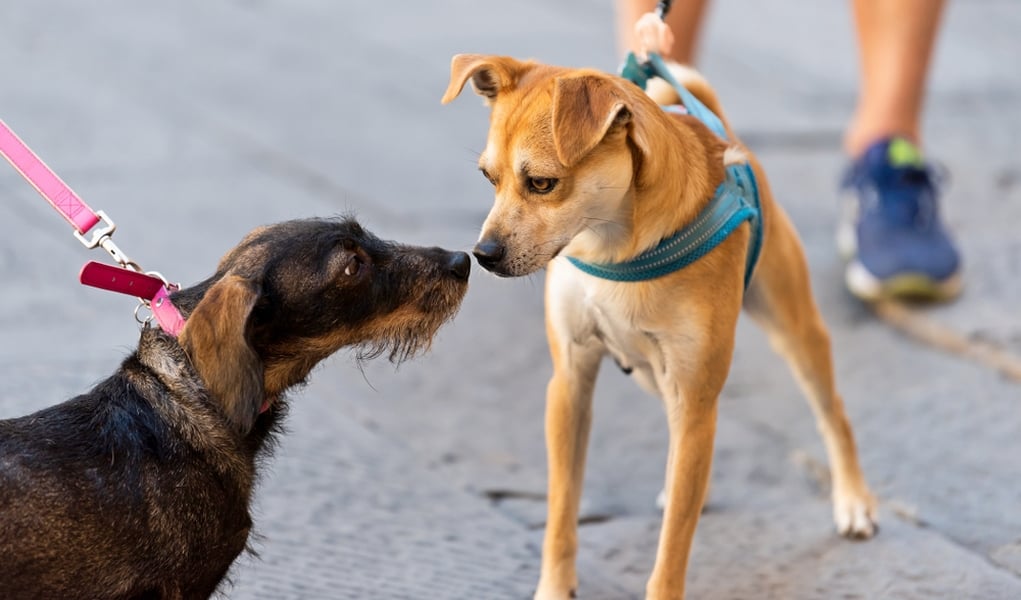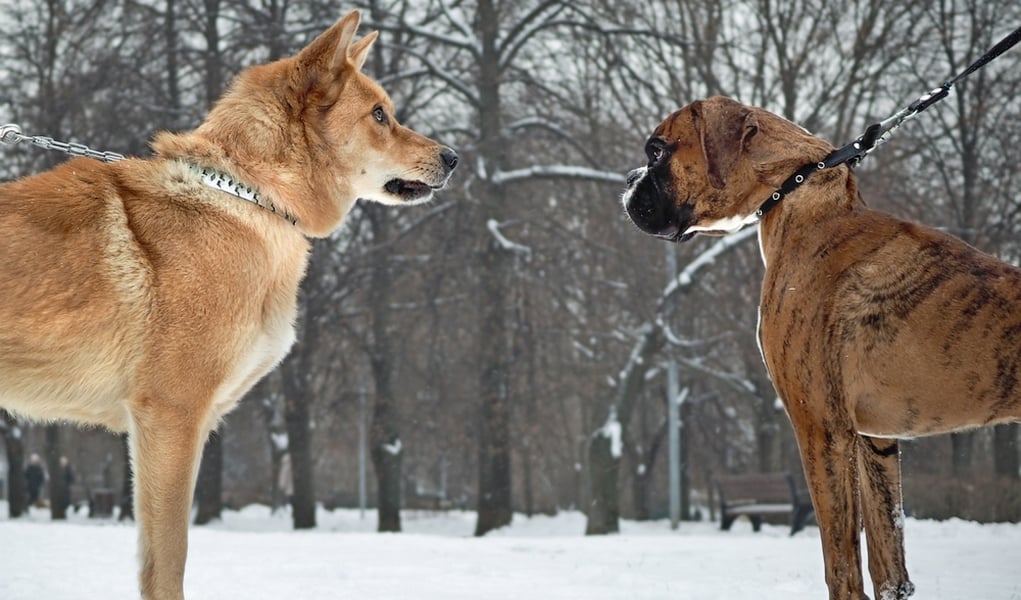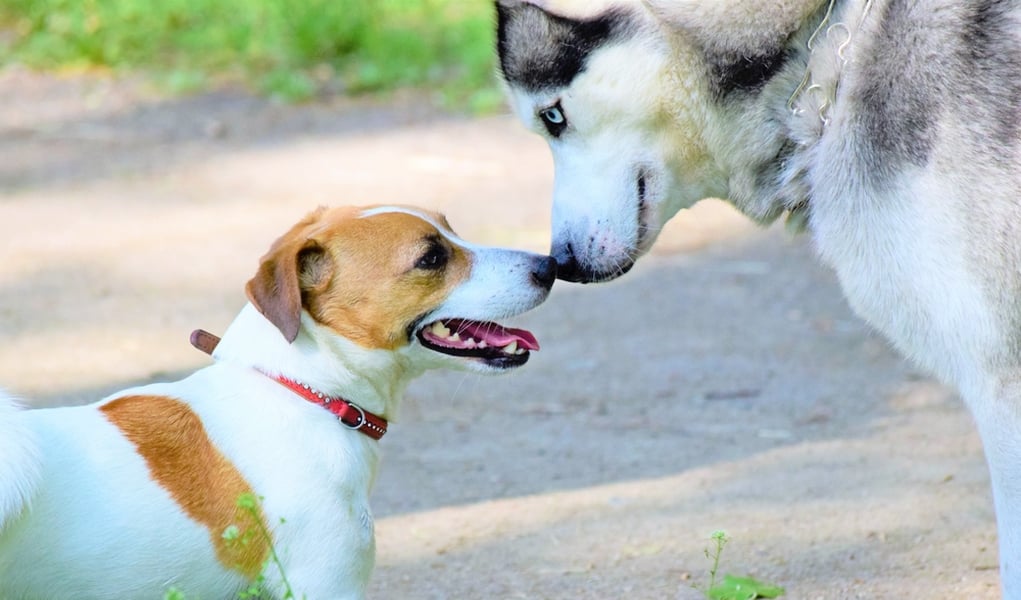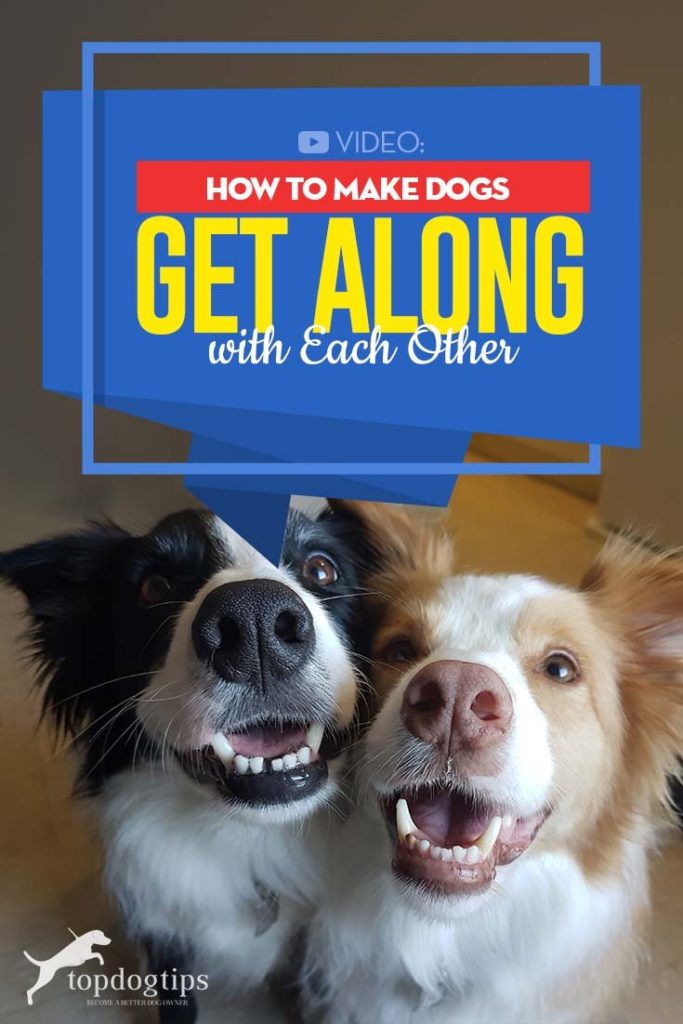Whether you are introducing a new dog into your home, or staying with friends and family that have a dog, you'll need to know how to make dogs get along. Sometimes, this task is simple, while other times it can be difficult. With patience, time and some tips I'm showing here, you will be able to work through this challenging time.
Table of Contents
The biggest danger of introducing two dogs to each other is one of them trying to establish dominance over the other. This is a normal animal behavior that has been demonstrated in studies. Unfortunately, this is not something you can 100% prevent.
However, you can control how the introduction between two dogs goes to avoid any problems, fights or injuries. Remember that a bad first dog introduction could set the foundation for a stressful relationship between these pets from here on out.
To ensure that you properly learn how to make dogs get along, follow the below steps (or watch the video above) to make the process as simple as possible. Finally, remember that if you don't feel like you can handle this yourself, especially if there are signs of aggression, then you should seek the help of a professional dog behavior specialist.
How to Make Dogs Get Along with Each Other
 1. Make a Good Introduction
1. Make a Good Introduction
As I mentioned above, a bad introduction can lead to a lifelong stressful relationship between the two dogs. You need to make the first introduction count. Take it slow and DO NOT just put the dogs together and hope for the best.
We have lots of great resources on introducing dogs to each other. For more detailed information check out these Top Dog Tips articles:
- How to Introduce a Puppy to Your Existing Dog
- 9 Tips for Introducing a New Dog When You Already Have Pets
Keep both dogs on a leash for the initial introduction, and make sure they are in a neutral space. If your dog feels like your home and your yard are her territory, she may be protective when a new dog enters. For this reason, it's important to have the first meeting on neutral ground.
Take things slow and be patient with both dogs. They may try to show dominance or act frightened at first. With time and patience it should get easier. You're not comfortable around new people in the first few minutes after you meet them, and the same is true for your dog.
2. Remain Calm at All Times
Studies have shown that dogs can sense anxiety and stress in humans. In turn, this makes the dog more anxious and stressed. Thus, it's important that you remain calm at all times when attempting to make two dogs to get along and like each other.
There should be no yelling, no anger and certainly no physical correction. The best thing that you can do is to remain calm and relaxed. If you're feeling stressed, take a break and separate the dogs until you can calm down.
3. Figure Out Possible Triggers
If you have two dogs that are not getting along and don't like each other, there may be something triggering the behavior. For example, some dogs become aggressive when food or bones are around. Other dogs are possessive of their belongings like toys or bedding.
One of the dogs may be a little extra irritable because they aren't feeling well or they are in pain. This is common if one (or both) of the dogs is older. The key is getting to the bottom of this trigger and, if possible, remove it before proceeding with the introduction.
4. Let the Dogs Decide the Pecking Order
One possible trigger could be a fight for dominance. When dogs are introduced to one another, the more dominant dog will usually take his place at the top of the pecking order. This is usually done without much of an issue, but sometimes it can cause a big problem.
Some dogs are more dominant than others, while others are more submissive. It is in a dog's nature to take their place in a pack. However, if you are learning how to make dogs get along and they are both dominant, things may not happen this easily.
If one or both dogs become aggressive, you will need to work with a professional trainer that specializes in aggressive behavior. It's best to seek the help of a professional in this situation, so you don't risk getting hurt or allowing the dogs to hurt each other.
5. Don't Worry
When pet owners are just learning how to make dogs get along, many of them become stressed about the future relationship between the two dogs. But if the dogs have a scuffle, don't worry about the next fight. Don't think about what will happen next at this point just yet.
Simply try to stay calm and take pleasure in the good moments that the dogs share. If you're constantly worried about the next altercation, you will be continuously stressed and anxious. Remember, if you're anxious about the next fight, your dog will sense it. If you don't want your dog to be thinking about the next scuffle, you can't be thinking about it either.
6. Burn Some Energy
If one dog has excessive energy, it may be a bit annoying to the other dog. When learning how to make dogs get along, it can be very helpful to burn some of that energy before allowing the dogs to be together.
Go for a walk, play a game of fetch or just run around the yard for a few minutes before getting the dogs together. While the energetic dog will still be quite excited, burning the excess energy first will be a big help.
If the dogs will be living together, make sure the hyperactive dog gets plenty of exercise on a regular basis. It may also be beneficial to give the less active dog a safe place to get away when they need a break, like a kennel or their own bed area.
7. Go Back to the Basics
When you're learning how to make dogs get along, think about basic obedience training. Is your dog listening when you say his name? Is he following your commands?
Some dogs will get overly excited when interacting with a canine companion, and they will ‘forget' their basic obedience training. If this is the case with your Fido, you'll have to go back to the basics.
Again, if you feel like you aren't capable of properly training your dog, you need to seek the help of a professional dog trainer. You'll never be able to learn how to make dogs get along if the dogs don't understand basic command and obedience training.
READ NEXT: 20 Most Friendly Dog Breeds in the World















